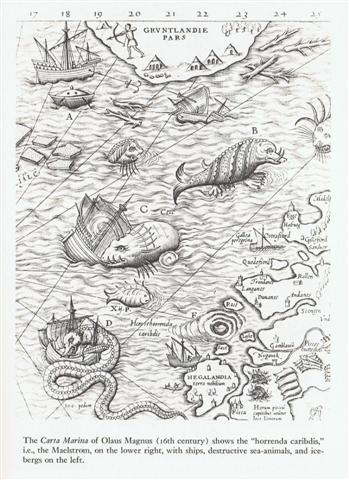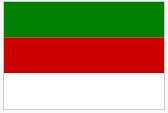|
TRANSLATIONS
The three last pages of the excursion at marama:
I have avoided the question why G (and probably also K) begin at the center of the island rather than in the extreme east, at Poike. It is already an excursion overloaded with facts and ideas. Focus should be in the southwest. The three youths (kope) standing in the water are not named after Hau Maka, like the rest of the kuhane stations. They belong to another person, Nga Kope Ririva Tutuu Vai A Te Taanga. We note the determinate article te in his name, which we suspect means the sun. A significant and interesting break in the long series of names 'A Hau Maka O Hiva' is Tama, which has no such connectioin with Hau Maka. It would seem Tama, the evil fish (he ika kino) with a very long nose (he ihu roroa), is a child of somebody else. Maui was the 5th little son of somebody named Taranga and I guess it may be the same person. If so, then Ta(r)anga could be the 2nd face of the sun, his 'night' person, his earlier self, now at left (in the west, in Hiva). The 1st face of the sun is tuu (tu'u) - standing up - and the 2nd face is ta (the black tattoo on the sun). ... Thus died this Maui we have spoken of, who was formed in the topknot of Taranga and cast in the sea, but was saved and nurtured to lead a life of mischief. And thus did the laughter of his companions at the last and most scandalous of his exploits deprive mankind of immortality. For Hine nui always knew what Maui had it in mind to do to her. But she knew that it was best that man should die, and return to the darkness from which he comes, down that path which she made to Rarohenga. Wherefore our people have the saying: 'Death came to the mighty when Maui was strangled by Hine nui to Po, and so it has remained in the world' ... Maui was cast in the sea, and he was formed in the topknot - which means the very latest part of something growing. It means he was formed at the very end of the year, I believe. The trickster is personifying the chaotic time when kings are toppled. It happens at the time of the topknot, when the old string of time is tied and a new one is set in motion (cfr the letter Q). The black rat is also black, and I now think I know why. Worthen follows in the footsteps of Hamlet's Mill and there we have Mysingr, the sea king: "... Snorri Sterluson explains why 'Frodi's grist' is a kenning for gold. Frodi ruled during a peaceful and productive period, contemporaneous with Augustus's Pax Romana and the birth of Christ; hence the kenning. There were neither thieves nor robbers during this period, 'so that a gold ring lay long on Jalang's heath'. Snorri continues his account with the legend of the mill beyond what is told in the song: The girls' grinding produced an army hostile to Frodi. On the very day of the girls' predictions, the sea-king, Musing (Son of the Mouse), landed o the Danish shore, killed Frodi, and took away Grotti and the women on his ship. The girls were bidden to grind out salt on the mill. At midnight they asked for further instructions. 'Keep grinding', he told them. Then they ground with such vigor that the ship sank. Water poured into the eye of the mill, creating the maelstroem of the sea. Therefore the sea was salt. Incidentally, the mill was given a kenning, Serpent's Couch." (Worthen) The king of the sea (the 2nd half of the year) had a Mouse as his father. Obviously the Mouse is the same mythic figure as Tangaroa Uri, because Metoro said kioe uri in the season of Tangaroa Uri, and because the kuhane station Te Kioe Uri also is located in spring. The colour of the sea may look dark, but so does the greenery of spring. It is the daytime sky which is light. The Lion in the sky at noon has a dark mouse at the other end of the spectrum (the row of spirits). Earlier I have thought the movement across the equator changed everything, so that the big yellow cat became a black rat. But, it seems, the change came earlier, with leaving the agricultural peasant's view (a season of leaf and a contrasting season of straw) in favour of a vertrical orientation. The Mouse and his son, the sea-king, are not to be found in the peasant's map of the world. We should look up to the sky instead of down on earth. Passing the equator surely changes much, but maps can be rotated. They do not need to be changed. Mouse is still mouse and lion still lion. "... Heiti are a kind of denominations (Neckel renders it 'Fürnamen') which the skalds used side by side with kenningar (circulocutions); the list of 'heiti of sea-kings' is to be found in the Third Grammatical Tract contained in Snorri's Edda (ascribed to Snorri's nephew Olaf), and among the twenty-four heiti, no. 10 is Mysingr, no. 15 is Mundill. Everyone who is familiar with the many names given to the cosmic personae - specific names changing according to the order of time - in Babylonian, Indian, Chinese, etc., astronomy, is not likely to fall for the idea that these heiti were names of historical kings ..." (Hamlet's Mill) The mill was left at the bottom of the sea, after the ship of Mysingr (who finished the old one in the 10th 'hour') had gone down, and it kept grinding out salt. The golden age was gone.
The serpent is close to his couch, and the hole which is his surely must be found in the rongorongo texts too. The location should be not far from the three standing rocks. Olaus Magnus has pictured Helgoland ('Helalandia, terra nobilium') as the main island and the whirlpool in the north in the midst of three smaller islands. The serpent seems to be personfied by mago in the rongorongo texts:
The waters between the mainland and Nga Kope Ririva were infested with sharks, I have read somewhere, taking their toll among those who tried to find the first manu tara eggs.
|
|||||||||||||||||||||||||||||||||||||||||||||||||||||||||||||||||||||||||||||||||||||||||||||||||||||||||||||||||||||||||||||||||||||||||||||||||||||||||||||














